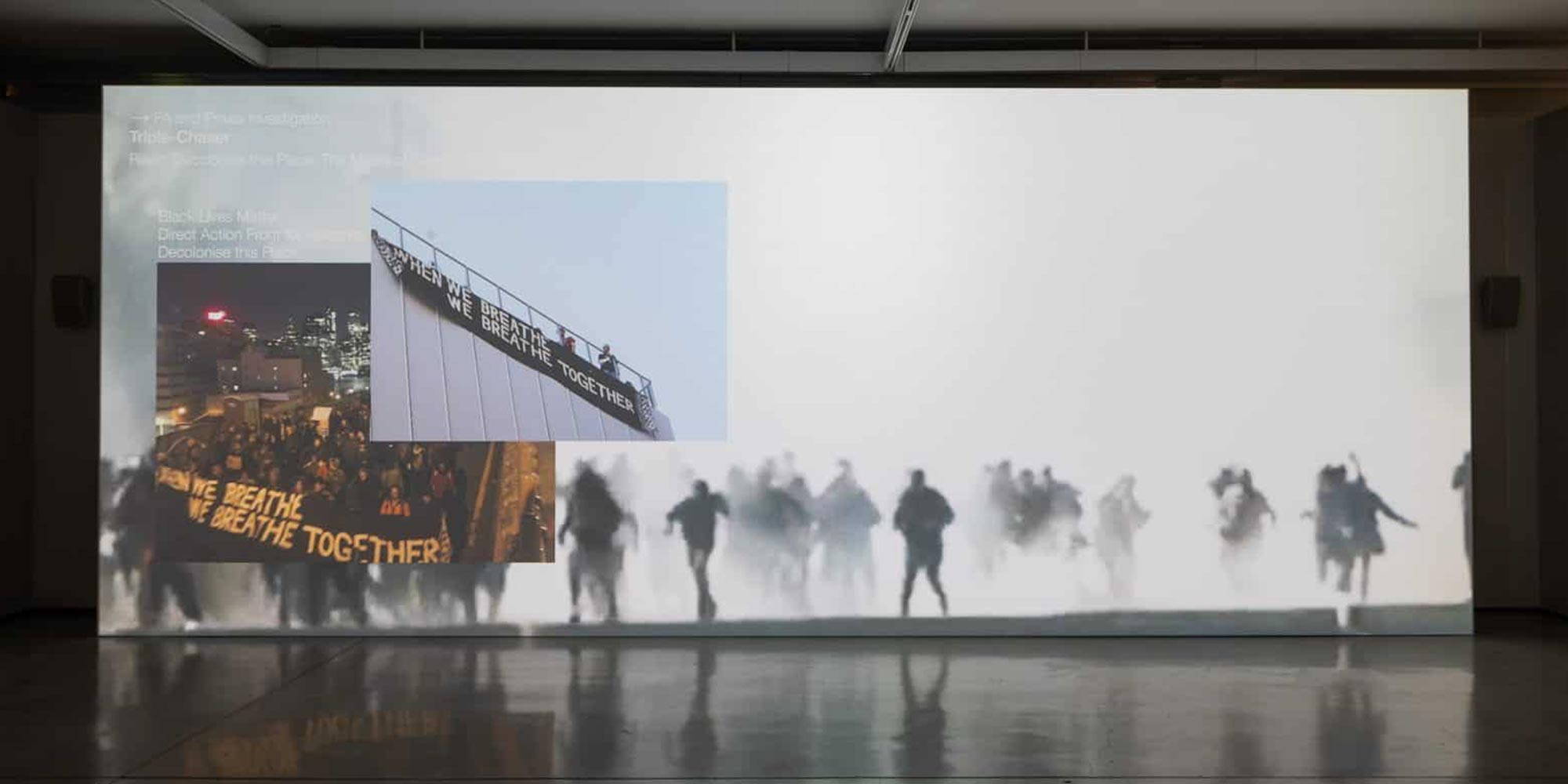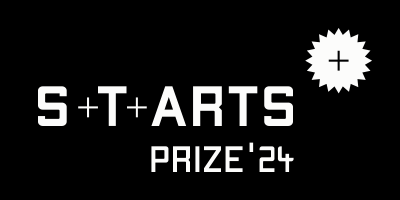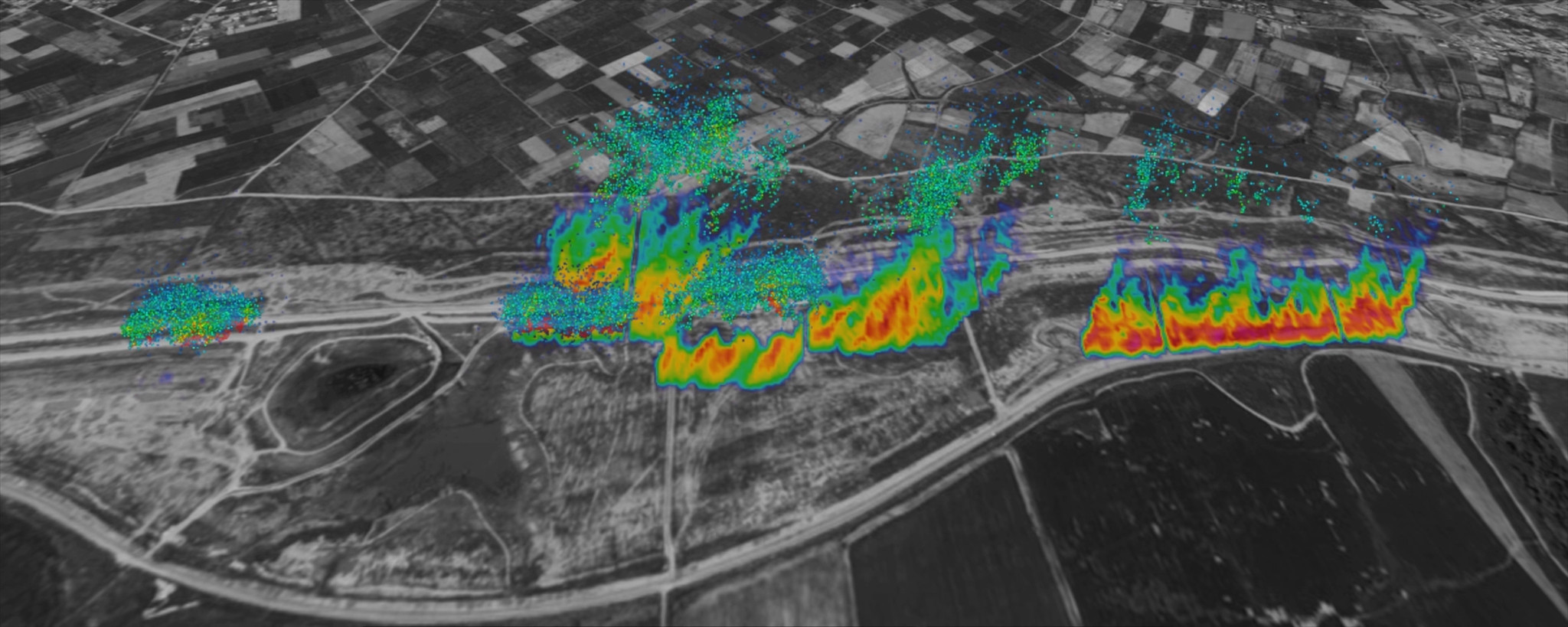Honorary Mention
Across the world, tear gas is deployed to disperse bodies gathering in democratic protest, white phosphorus and chlorine gas spread terror in cities under siege, aerial herbicides destroy arable land and ruin livelihoods, and large-scale arson eradicates forests for industrial plantations. Mobilized by state and corporate powers, toxic clouds colonize the air we breathe across different scales and durations, from city squares to continents, unique incidents to epochal latencies.
In the recent history of human rights, incidents of violence have been understood as momentary and kinetic: a gunshot or explosion, where ‘every contact leaves a trace.’ But contemporary airborne violence requires a different approach: clouds are transformative entities—their dynamics elusive and nonlinear; causality is hard to demonstrate, the ‘contact’ and the ‘trace’ drift apart, carried away by winds or ocean currents. Around these toxic fogs, contemporary political conditions breed doubt and lethal skepticism, and physical clouds become epistemological. When figures in power deny the realities of climate change or chemical attacks, those forced to inhabit the clouds must find new forms of resistance.
This work brings together eight recent investigations by Forensic Architecture, each examining different types of toxic clouds and the capacity of states and corporations to occupy airspace and create unliveable atmospheres. Combining digital modelling, machine learning, fluid dynamics, and mathematical simulation in the context of active casework, it serves as a platform for new human rights research practices directed at those increasingly prevalent modes of ‘cloud-based,’ airborne violence. Following a year marked by environmental catastrophe, a global pandemic, political protest, and an ongoing migrant crisis, Cloud Studies offers a new framework for considering the connectedness of global atmospheres, the porousness of state borders and what Achille Mbembe terms ‘the universal right to breathe.’

Credits
Forensic Architecture Team:
Principal Investigator: Eyal Weizman
Researcher in Charge: Samaneh Moafi
Team: Robert Trafford, Martyna Marciniak, Lola Conte, Lachlan Kermode, Mark Nieto, Leigh Brown, Sarah Nankivell, Christina Varvia, Amy Cheung, Shourideh C. Molavi.
Originally commissioned by ZKM Centre for Art and Media in Karlsruhe.
Forensic Architecture (FA) is a research agency at Goldsmiths, University of London, investigating human rights violations by states and corporations using pioneering techniques in the fields of spatial analysis, open source investigation, modelling, and immersive technologies. FA works in partnership with institutions across civil society, from grassroots activists and legal teams to NGOs and media organizations, to carry out investigations with and on behalf of communities and individuals affected by conflict, police brutality, border regimes, and environmental violence.
Jury Statement
Cloud Studies propose a new and radical approach to investigate contemporary clouds, suggesting the need for an alternative cartography of critical zones. It is a video work that assembles eight recent investigations by Forensic Architecture under the common theme of toxic clouds in different geographical locations and local contexts—from chemical white phosphorus and glyphosate used in Gaza, tear gas used to disperse crowd protests in Hong Kong, methane in Argentina, or chlorine used in the Syrian town of Douma, and arson used to eradicate Indonesian forests for industrial plantations. In the turbulent and fragile year of the COVID-19 pandemic, where the relationship between nature, ourselves, and technology appears dangerously unbalanced, Cloud Studies reflects on the global atmosphere dominated by toxic clouds that colonizes the air we breathe and shapes our environment and our perception, prompting collective resistance and protests. Clouds are also a metaphor for the fragility and porosity of borders, since we are all connected and close, breathing the same toxic air. It is clearly denouncing how state and corporate powers continuously mobilize new types of clouds to control and manipulate human behaviors and their environment. Toxic clouds colonize the air we breathe, leaving traces everywhere, and it is hard not to relate it to the infrastructural “clouds” that colonize our digital life today, amassing information and data that can be used and monopolized in various ways. Audio recordings and the audiovisual narrative, together with the essays and texts read by their authors are also made accessible in a virtual exhibition platform, providing more in-depth information for the audience: https://critical-zones.zkm.de/#!/detail:cloud-studies.



